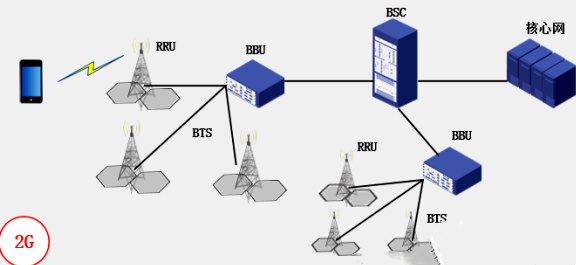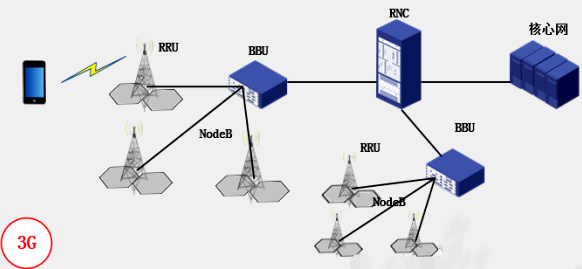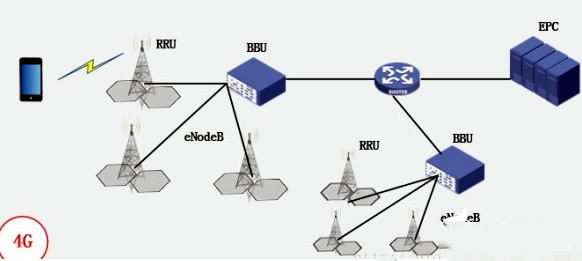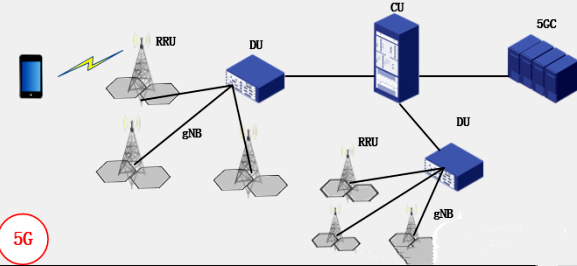The communication base station architecture development of 2G 3G 4G 5G- Our Technological Leaps
(1G) began to develop gradually, and has now developed to the fifth-generation mobile communication system (5G), which begun to be standardized, and be commercially available in 2020. This article summarizes the base station architectures of 2G, 3G, 4G and 5G systems respectively.
① 2G
The 2G communication system adopts a three-level network architecture, namely: BTS-BSC-core network. The 2G core network includes both the CS domain and the PS domain.The 2G communication system mainly adopts an integrated base station architecture at first. The integrated base station architecture is shown in the figure below. The antenna of the base station is located on the iron tower, and the rest is located in the equipment room next to the base station. The antenna is connected to the indoor computer room through the feeder. The integrated base station architecture needs to build a computer room under each iron tower, which has a long construction cost and cycle, and is not convenient for the expansion of the network architecture. It later developed into a distributed base station architecture. The distributed base station architecture divides the BTS into RRU and BBU. Among them, RRU is mainly responsible for modules related to radio frequency , including 4 modules: intermediate frequency module, transceiver module, power amplifier and filter module. The BBU is mainly responsible for baseband processing and protocol stack processing. The RRU is located on the iron tower, and the BBU is located in the indoor equipment room. Each BBU can be connected to multiple (3-4) RRUs. Fiber connections are used between the BBU and RRU.

② 3G
When developing a 3G network, in order to save network construction costs, the 3G network architecture is basically consistent with that of 2G. The 3G communication system also adopts a three-level network architecture, that is, NodeB - RNC - core network. The 3G core network includes both the CS domain and the PS domain. In the 3G era, the distributed base station architecture is mainly adopted. Similarly, the distributed base station architecture divides NodeB into two parts, BBU and RRU.

③ 4G LTE
With the advent of the 4G era, the base station architecture has undergone major changes. In order to reduce the end-to-end delay, 4G adopts a flat network architecture. "Flatten" the original 3-level network architecture into 2-level: eNodeB-core network. Part of the functions of the RNC is split in the eNodeB, and part of them is moved to the core network. The 4G core network only includes the PS domain. 4G base stations basically adopt the architecture of distributed base stations. At the same time, the C-RAN architecture proposed and promoted by China Mobile is gradually being promoted. The C-RAN architecture further centralizes, cloudifies, and virtualizes the functions of the BBU. Each BBU can connect 10-100 RRUs, further reducing the network deployment cycle and cost. Different from traditional distributed base stations, C-RAN breaks the fixed connection relationship between remote 4G LET antenna units and baseband processing units. Each remote 4G LET antenna unit does not belong to any baseband processing unit entity. The processing of sending and receiving signals on each remote radio unit is completed in a virtual baseband base station, and the processing capability of this virtual base station is composed of some processors in the baseband pool allocated by real-time virtual technology.

④ 5G
In order to further improve the flexibility of the 5G mobile communication system, 5G adopts a three-level network architecture, the level DU-CU-core network (5GC). DUs and CUs together form a gNB, and each CU can be connected to one or more DUs. There are multiple functional division schemes between CU and DU, which can adapt to different communication scenarios and different communication requirements.



